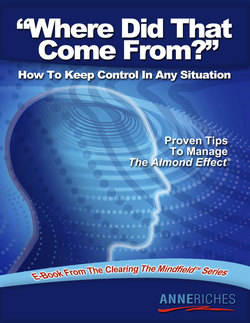Читать книгу Where Did That Come From?: How to Keep Control In Any Situation - Anne Boone's Riches - Страница 8
На сайте Литреса книга снята с продажи.
ОглавлениеWhy does our brain react to a threat without thinking?
Here’s another example. You’re in your garden, and you see what looks like a long, dark, narrow shape along your back fence. Chances are you’ll jump back and grab the nearest garden spade or weapon you can find and start bashing it. Your heart will start to race. Your muscles will tense. You’ll get the shakes.
Your brain’s alarm systems are shouting, ‘Snake! Snake!’ Just an instant later, you realise that the shape is simply an old piece of garden hose, and you feel a bit stupid when you see your neighbour laughing at you over the fence!
But here’s what happened in your head. When your eyes saw the shape, the images travelled in two directions at once inside your brain: to your amygdala, and to your neo-cortex - the thinking part of your brain.
The way your brain works, your amygdala, focused solely on your survival above all else, got the rudimentary images first. Using the database of ‘nasty things’, it quickly matched its first glance at the garden hose to a shape it knew from past experience was a threat, a snake. The warning system was activated, and you were primed for action, with adrenaline pumping through your body, making you take instant action (grabbing the spade) without taking the time to think about it.
A fraction of a second later, your neo-cortex also received the image, realised it was only a piece of garden hose, and told the amygdala that it was in fact, nothing to worry about. So your body had fired into action without thinking, and got it wrong. This is The Almond Effect®.
The amygdala can take control of our actions even as the thinking brain, the neo-cortex, is still working out what’s the best way to respond. The Almond Effect® occurs when an impulsive feeling overrides the rational response.
The trouble is, this response, while appropriate when we are in life-threatening situations, often catches us out in non-life threatening moments at work and at home, leaving us to say later: ‘If I’d thought about it, I wouldn’t have done/said that’.
